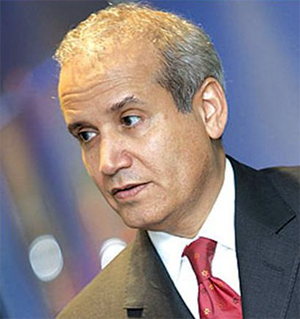Investigation casts doubt on US drone strike in Afghanistan that killed family of 10
The US carried out a Reaper drone strike that killed a family of 10 in Afghanistan after following their car for hours based on evidence that it was carrying explosives. An in-depth video analysis and investigation published by the New York Times on Friday found that there was no ISIS bomb in their possession.
The missile was the last one fired by the US during its 20-year presence in Afghanistan. After hours of surveillance on August 29, the military fired the drone at the car thought to be carrying an ISIS bomb, claiming that it posed an imminent threat to its troops at Kabul’s airport.
According to the US military, the drone strike may have killed three civilians, but NYT reporting reveals otherwise, believing that 10 were actually killed, including seven children.
The NYT launched an investigation into the matter, analyzing video evidence and conducting interviews with several of the driver’s co-workers and family members in Kabul.
What they found raised doubts about the US version of events, including whether the car had explosives in it, if the driver had a connection to ISIS, or whether a second explosion took place after the missile struck the car.
Driver’s identity was unknown
Military officials have said that the identity of the car’s driver was unknown to them when the drone was fired but considered him suspicious because of how his activities that day had been interpreted. They added that he possibly visited an ISIS safe house and loaded what they thought were explosives into the vehicle.
The NYT identified the driver as Zemari Ahmadi, 43, a man who was a longtime worker for a US aid group, with evidence suggesting that his travels that day involved transporting his colleagues to and from work.
Children came out to meet him upon arrival
Although little was known about Ahmadi’s identity at the time, the US officials said that they were convinced the white sedan he was driving posed an imminent threat to their troops stationed at the airport.
As Ahmadi pulled into the courtyard of his house, which officials reportedly admitted did not look like the alleged ISIS safe house, the tactical commander took the decision to strike Ahmadi’s vehicle, launching a missile at around 4:50 p.m.
While he was in the middle of a densely populated residential area, the drone operator scanned the area and saw one adult male “greeting the vehicle” and assessed with “reasonable certainty” that no children, women or noncombatants would be killed.
However, Ahmadi’s relatives said that once he pulled into the courtyard, his children along with his brothers’ came out to greet him and got into the car. His brother Romal was sitting with his wife on the ground floor of the house when he heard the car entering and his cousin Naser had gone out to collect some water containers.
Engine still running, they heard a sudden blast leading to shattered glass across the room, according to Romal, who then ran out into the courtyard and found his nephew Faysal, 16, with an injured torso and head wound due to the shrapnel. He then saw another dead nephew, before his neighbors arrived and pulled him away.
Ahmadi’s relatives said that 10 were killed in the explosion: Ahmadi, three of his children, his cousin, three of Romal’s children and two three-year-old girls.
The US military justified its actions by citing that another larger blast took place shortly after.
Chairman of the Joint Chief of Staff General Mark A. Milley said last week, “Because there were secondary explosions, there is a reasonable conclusion to be made that there were explosives in that vehicle.”
“It seriously questions the credibility of the intelligence or technology utilized to determine this was a legitimate target,” British Army vet and security consultant Chris Cobb-Smith said.
Loading canisters into car
A video analysis by the NYT revealed that the US military may have seen Ahmadi and one of his colleagues loading canisters of water into the trunk of the car to bring home to his family.
Since 2006, Ahmadi worked as an electrical engineer for California-based aid group Nutrition and Education International (N.E.I).
N.E.I country director and Ahmadi’s boss, reportedly told the news outlet (on condition of anonymity) that he asked the 43-year-old to pick up his laptop at around 8:45 AM.
His relatives, who also spoke on condition of anonymity, told the NYT that Ahmadi left his house for work that morning at around 9 a.m. in a white 1996 Corolla that belonged to the aid group.
US officials involved in the investigation told the NYT that their target, who drove a white sedan, came under surveillance at around that time after being spotted leaving a compound which they believed was an alleged ISIS safe house that was around five kilometers northwest of the capital city’s airport. However, according to the investigation, it remains unclear whether the officials were referring to one of the three stops Ahmadi made on the way to work to pick up his colleagues and the laptop his director had asked him for.
The home of the director was close to where an ISIS rocket attack was expected to take place from where a launcher, concealed inside a vehicle similar to the one Ahmadi had driven that morning, would have been used to target Kabul airport.
“We have nothing to do with terrorism or ISIS,” the director, who was in the middle of a US resettlement case, said. “We love America. We want to go there.”
Moves seen as suspicious
The people who rode with Ahmadi that day said that the US military interpreted their moves as suspicious, when in fact, it was just a normal day of work for them.
Surveillance footage obtained by the NYT recorded the arrival of Ahmadi and his colleagues in the N.E.I office at 9:35 a.m. He was then seen leaving to drive his coworkers to a Taliban-occupied police station where they had gone to request permission to distribute food to refugees nearby. Ahmadi and his colleagues then returned to the office at around 2:00 p.m.
The footage showed that Ahmadi came out around half an hour later with a hose to fill several empty containers with water, with the help of a guard who confirmed this to the NYT.
“I filled the containers myself, and helped him load them into the trunk,” the guard said.
Ahmadi’s coworkers said that water deliveries in the neighborhood were stopped after the Taliban takeover, so he was bringing water home from the office.
Before the camera footage was cut off, the guard and a coworker of Ahmadi’s were seen moving the car farther into the driveway at 3:38 p.m. The footage ended when the office switched off its generator at the end of the workday. Ahmadi and three passengers then left the office to go home.
It was at around this time that the drone reportedly tracked him to a compound that was located around eight to 12 kilometers southwest of Kabul airport, US officials confirmed. The drone then monitored the men loading heavy packages into the car which they thought contained explosive materials.
According to the passengers, the trunk consisted of plastic water-filled containers which were placed in there earlier in the day and they reportedly only had two laptops with them which they brought into the car. All three passengers denied loading explosives into the car in separate interviews.
‘He liked happy music’
Ahmadi drove the three passengers home but did not switch the radio on throughout the drive out of fear of getting in trouble with the Taliban.
“He liked happy music. That day, we couldn’t play any in the car,” one of his colleagues said.
“I asked him to come in [after he dropped him off] for a bit, but he said he was tired.”
Upon his return home that day, Ahmadi, along with his family members were killed in the US drone strike.





